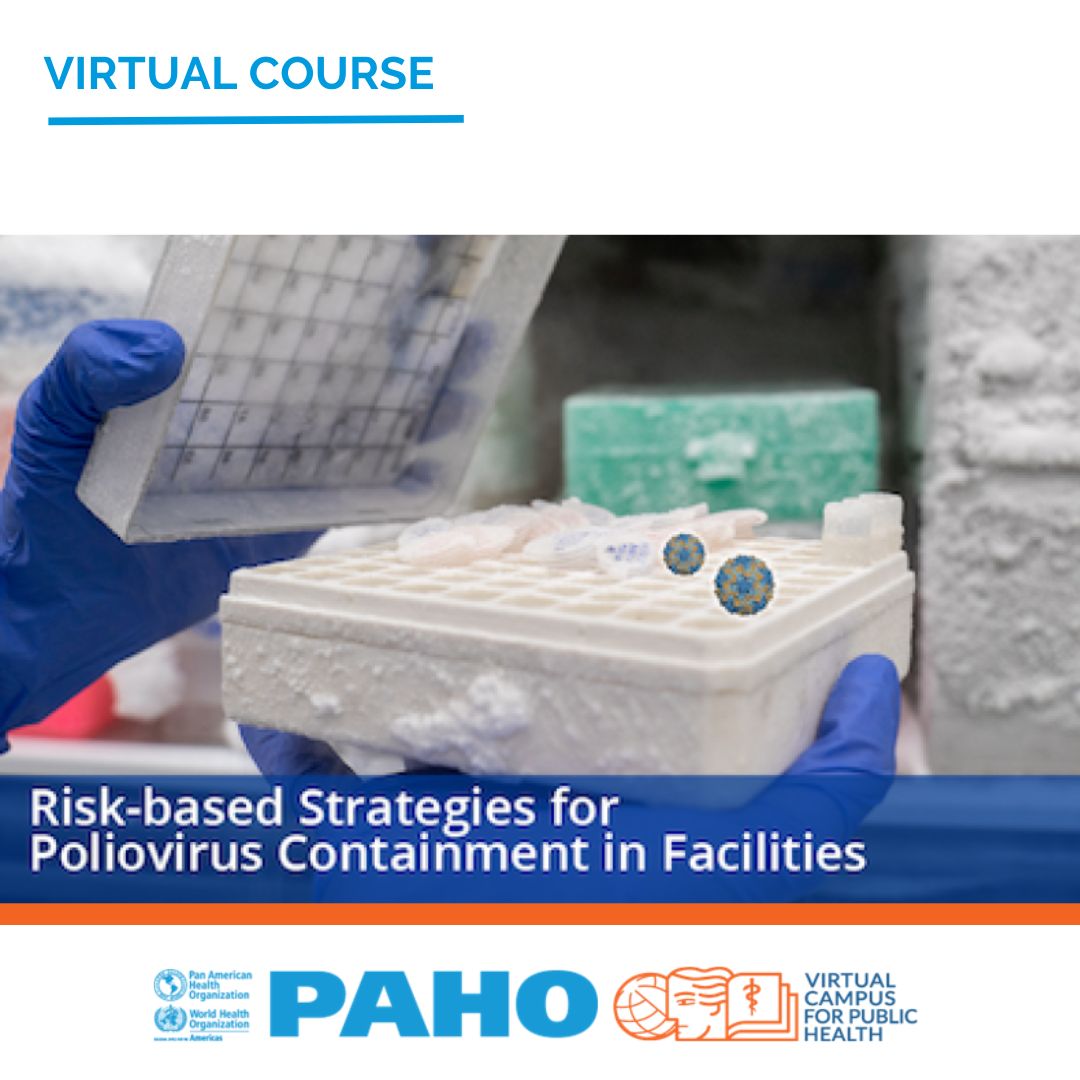Risk-based Strategies for Poliovirus Containment in Facilities - 2023

Introduction
Two of the three poliovirus wild type strains are now eradicated. However, eradication does not mean that these strains are extinct. While global eradication efforts continue, appropriate poliovirus containment is critical to minimize the risk of poliovirus release from facilities that retain poliovirus strains e.g., for research or vaccine production purposes.
WHO’s third edition of the Global Action Plan to minimize facility-associated risk after type-specific eradication of wild polioviruses and sequential cessation of oral polio vaccination use (GAPIII) defines the standards that facilities are required to follow to ensure the safe handling and containment of poliovirus infectious materials. The retention of poliovirus potentially infectious materials is addressed in WHO’s Guidance to minimize risks for facilities collecting, handling or storing materials potentially infectious for polioviruses, second edition (PIM Guidance).
To minimize the risk of accidental or malicious release that may start new infections and paralysis, all facilities and people handling or storing poliovirus are requested to implement the agreed containment strategy and choose between two options: risk elimination by destroying poliovirus materials in all but certified poliovirus-essential facilities (PEFs) and biorisk management of these facilities by strict adherence to required safeguards.
In this computer-based training course, the basic concepts associated with implementing a comprehensive biorisk management program will be discussed. An introduction to the conduct of biological risk assessments, the identification of appropriate mitigation measures, and the evaluation of performance of implemented mitigation measures will also be provided. Participants will learn how to identify poliovirus potentially infectious materials and how to handle and store or destroy them. Lastly, this course will briefly describe the requirements defined in GAPIII that facilities must implement for the retention of polioviruses.
Educational approach
This course uses online self-learning techniques linking theoretical knowledge with practical user-responsive activities that will allow progress through the different modules of the training program.
Course purpose
-
Provide an overview of poliovirus materials and available strategies to prevent infection and minimize poliovirus facility-associated risk
-
Describe a risk management process
-
Provide insights into the global polio eradication program
-
Understand the importance of implementing appropriate poliovirus containment measures in laboratory facilities
-
Alert facility leaders and workers to the importance of identifying materials with a potential of harboring poliovirus known as potentially infectious material (PIM)
-
Describe requirements of the WHO Global Action Plan for containment (GAPIII)
-
Highlight the importance of building a sustainable safety and security culture for the containment of poliovirus in accordance with GAPIII
Target audience
This training is specifically designed for laboratory and public health managers and workers in the Americas and is available for personnel from all regions.
Objectives
Upon completion of this course, participants will be able to:
-
Understand poliovirus biology
-
Appreciate the importance of managing biorisk
-
Identify and classify materials potentially infectious for polioviruses (PIM) following the PIM Guidance
-
Understand how to handle new poliovirus PIM
-
Describe strategies for the effective identification and management of poliovirus PIM, and for the appropriate containment of poliovirus following GAPIII
Competences that the course allows to develop
This course provides opportunities to develop competencies linked to the:
-
Identification and categorization of sample collections as potentially infectious for poliovirus, to minimize the risk of release of poliovirus into communities
-
Management of biorisk associated with the storage and handling of poliovirus potentially infectious materials
Duration/Workload
This self-learning course is open and available at the Virtual Campus for Public Health at PAHO. Participants can take the time they need to complete the different modules.
The full course duration is estimated at 6 hours, including the completion of the units and the associated assessments.
